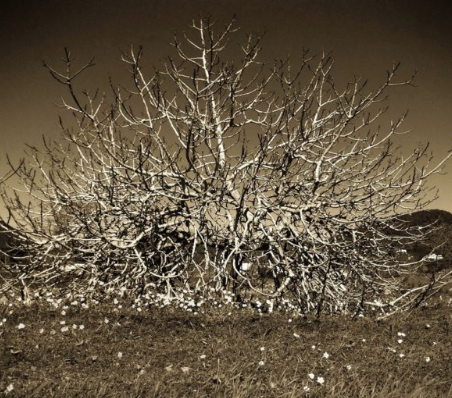Jesus and Fig Trees

Did you ever read something in the Bible and wonder what you just read? So, you read it again. It still makes no sense. You try again. Nothing.
Here’s an example from Matthew 21:18–19. Jesus arrived in Jerusalem and was hungry. He saw a fig tree, but he went to it, he found no fruit, only leaves. Jesus said to the tree, “May no fruit ever come from you again!” And the tree “withered at once.” Huh?
Here are my thoughts:
- Jesus had no right to zap someone else’s fig tree.
- His action was mean.
- Our neighbors have a fig tree that is full of green leaves but has no fruit yet. Why was Jesus so impatient?
For years, I asked myself, Why is this story even in the New Testament? Figs are referred to about sixty times in the Bible. They usually represent peace and prosperity, but in Matthew, Jesus kills a fig tree. That makes no sense!
Let’s jump to the Gospel of Mark, which was written around 70 CE right after the Romans destroyed the Temple in Jerusalem and dispersed the Jews from that area. Mark’s version of the fig tree story is a bit longer (11:12–14). He says Jesus was coming from Bethany (three miles from Jerusalem), admits that figs were not yet in season, and then reports that Jesus said, “May no one ever eat fruit from you again.” This was witnessed by his disciples, but whether the tree withered is not mentioned. Why such a story? Mark’s version is not as mean as Matthew’s, but it’s still not nice.
Now for some explanations.
When the Gospel of Mark was written, the Temple had just been destroyed, and although the Followers of the Way (Jesus’s group) still considered themselves a sect of Judaism, the power of the Temple in Judaism was gone—and still is. A mosque now stands where the Temple used to be.
Matthew was most likely written between 80 and 90 CE, when the Followers were splitting from Judaism over whether Jesus was the Messiah. When Matthew said, “May no fruit ever come from you again,” he was really saying that Judaism was dead and had withered away. Although Matthew was wrong (Judaism is still alive and well), he made it clear that the Followers were finished with Judaism. The Messiah had come.
The Gospel of Luke was likely written between 80 and 110 CE. The Followers were increasingly comprised of gentiles, and Christianity was flourishing as a new religion. Luke made a parable out of the fig tree story (13:6–9). He wrote about a man who planted a fig tree in his vineyard. (Figs in vineyards?) After three years, the tree bore no fruit, so the man ordered his gardener to cut it down. But the gardener wasn’t willing to give up and pleaded for one more chance to give the tree new life.
I like what Luke did with this story. He gave the withered tree new life.
Jesus tells us, “Feed my sheep” (John 21:17). Don’t give up on anyone. Keep trying to nurture them and give them new life.
Annie and I have tutored prison inmates for seven years to give them new life in the midst of hopelessness. Best volunteer job I ever had!
If I had a chance to do my life over, I would work in prisons offering inmates opportunities to start over — just like Luke’s fig tree parable suggests. The present practice of dehumanizing folks in prisons isn’t working!
Matthew 25:40 tells us to care for the “least of these.” And that includes prisoners.
What’s your take on Jesus and fig trees?
Visit Bil Aulenbach’s website here.
